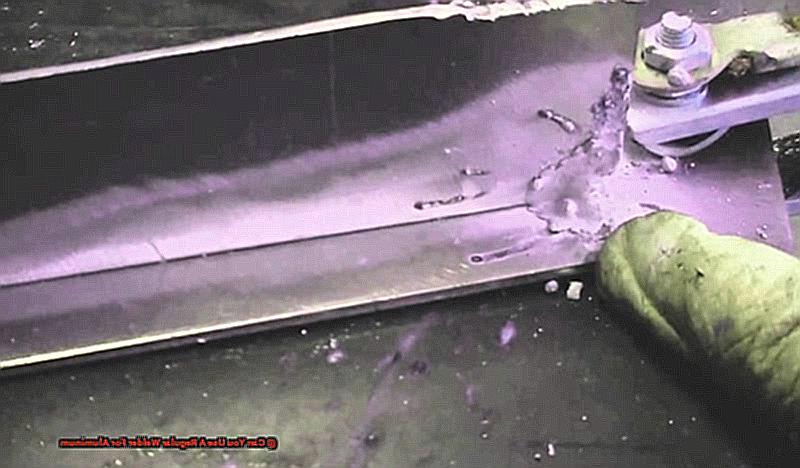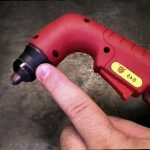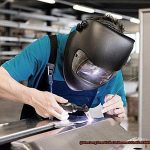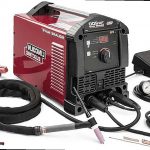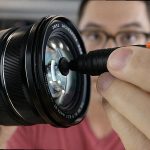Are you a skilled welder looking to broaden your expertise and take on new challenges?
Have you been told that welding aluminum requires specialized equipment and training? Well, I have some exciting news for you.
It is indeed possible to use a regular welder for aluminum welding with the right techniques and tools. That’s right, no need to break the bank or attend costly training programs.
In this blog post, we will delve into the intricacies of using a regular welder for aluminum welding. From essential equipment and safety measures to insider tips for achieving strong and flawless welds, we’ve got you covered.
So, grab your helmet and let’s explore the world of aluminum welding with a regular welder.
What Type of Power Source Should You Use for Welding Aluminum
Contents
When it comes to welding aluminum, the recommended power source is TIG (Tungsten Inert Gas) welding. This method employs a non-consumable tungsten electrode and an inert gas, such as argon, to create a stable arc and safeguard the weld from contamination. TIG welding also provides precise control of heat input, which is crucial for welding aluminum due to its lower melting point compared to other metals.
But why is TIG welding the preferred method for welding aluminum? Let’s delve deeper into the science behind it. Aluminum has a melting point of 660 degrees Celsius, significantly lower than steel or iron. This means that it requires less heat to fuse together. TIG welding offers accurate heat control, enabling the welder to maintain the optimal temperature and prevent overheating or warping of the metal.
Furthermore, TIG welding utilizes AC (alternating current) instead of DC (direct current) when welding aluminum. This is because AC helps prevent overheating and distortion of the metal. When using DC, the heat generated is not evenly distributed, leading to potential burn-throughs or distortion of the metal.
While other power sources like MIG (Metal Inert Gas) or stick welding can also be utilized for aluminum, they require specialized techniques and equipment. MIG welding uses a consumable wire electrode that continuously feeds into the weld pool, while Stick welding employs a coated electrode that melts and forms the weld. These processes are more suitable for metals with higher melting points, such as steel or iron.
Moreover, using a regular welder for aluminum can also cause issues with the shielding gas used in MIG welding. Regular welders utilize 100% CO2 gas, which is not recommended for aluminum welding.
Wire Feeder
In this piece, we will delve into the realm of #2 wire feeders and discover their potential in enhancing your aluminum welding endeavors.
Why does the type of wire feeder hold such significance in the process of welding aluminum? To put it simply, aluminum is a tricky metal to weld. Its low melting point and high thermal conductivity make it susceptible to warping and distortion, resulting in weak and unsightly welds. This is where a reliable wire feeder comes into play.
One highly recommended option for aluminum welding is the spool gun wire feeder. This tool attaches directly to your welding gun and feeds the wire straight from a spool mounted on the gun itself. This offers better control over the wire feed, reducing the risk of birdnesting or tangling. Moreover, it eliminates the need for long, cumbersome cables that can hinder delicate aluminum work.
If you prefer using your regular MIG gun for aluminum welding, utilizing an aluminum-specific liner can also yield exceptional results. However, this approach may require more skill and expertise to achieve desired weld quality. It is imperative to ensure that the liner is clean and in top condition before each use to prevent any contamination that could affect the weld.
Another option is the push-pull wire feeder, which utilizes a motorized gun to push and pull the wire through a set of rollers. While this type of wire feeder offers even more control over the feeding process, it can be pricier and may not be necessary for most welding projects.
Regardless of which type of wire feeder you opt for, proper technique and settings are crucial for successful aluminum welding. This involves finding the right balance between voltage and wire speed, as well as using a shielding gas specifically designed for welding aluminum.
However, the type of wire feeder is not the sole aspect to consider when welding.
What Kind of Gas Do You Use for MIG Welding Aluminum
When it comes to welding aluminum, it’s all about having the right gas. This metal, with its high thermal conductivity and low melting point, requires a specialized gas for MIG welding to ensure strong and flawless welds. So, what type of gas should you use? Let’s delve into the three most common options and their unique advantages.
First on the list is Argon gas, the go-to choice for MIG welding aluminum. With its excellent arc stability and inert properties, Argon reduces the risk of weld contamination. It’s purest form, 99.996% pure, makes it perfect for welding thin aluminum sheets. However, it may not be suitable for thicker materials as it can result in shallow penetration.
Next up is Helium gas, known for its ability to increase heat input and arc voltage. This makes it an excellent option for welding thicker aluminum pieces. It also offers better weld pool fluidity and increases travel speed, resulting in faster production rates. However, Helium can be costly and may require a higher flow rate compared to other gases.
For the best of both worlds, many welders opt for a mixture of Argon and Helium for MIG welding aluminum. This combination provides the stability of Argon and the heat input of Helium, resulting in deeper penetration and faster travel speeds. The ideal ratio for this mixture is 75% Argon and 25% Helium.
In conclusion, while all three gases have their distinct advantages, choosing the right one depends on the thickness of your aluminum material and your desired welding speed. It’s essential to experiment with different gases and find the perfect balance for your specific welding needs. After all, as any skilled welder knows, the right gas can make all the difference in achieving flawless and strong welds on this tricky metal.
What Kind of Welding Gun Do You Use for MIG Welding Aluminum
As a seasoned welder with years of experience under my belt, I have had the opportunity to test out various MIG welders for aluminum. Through trial and error, I have discovered that the Hobart Handler 0 reigns supreme in the world of welding. This powerful machine is equipped with a spool gun option, making it the ideal choice for effortlessly welding aluminum. But what sets it apart from all the others?
The first standout feature of the Hobart Handler 0 is its impressive amperage output of up to 230 volts. With this level of power, this welder can easily handle aluminum thicknesses up to 3/16 inch without breaking a sweat. This makes it a versatile tool for a wide range of projects, whether you’re working with thin sheets or thicker materials.
But what truly makes this MIG welder a cut above the rest is its push-pull or spool gun option. The push-pull feature ensures a consistent and stable wire feed, preventing any potential feeding issues that may arise when using a standard MIG gun. On the other hand, the spool gun option offers precise control over the wire feed speed, resulting in cleaner and more accurate welds.
When it comes to welding aluminum, torch length and liner materials are crucial factors in achieving optimal performance. That’s why the Hobart Handler 0 comes equipped with a 10-foot long M (M max) torch length, providing ample reach for maneuvering around larger projects. And when combined with a Teflon or carbon/Teflon liner, it ensures smooth wire feeding without any kinks or clogs.
Another essential element for achieving flawless aluminum welds is using the right contact tip. The Hobart Handler 0 comes with specially designed contact tips for aluminum welding, marked with an “A” after the size number. These tips play a crucial role in preventing wire burnback and ensuring proper electrical conductivity.
What Kind of Wire Do You Use for Mig Welding Aluminum
First up is pure aluminum wire, a versatile and ductile option ideal for welding pure aluminum. Its pliability and ease of use make it a popular choice in industries where precision and finesse are paramount, such as automotive or decorative projects. This wire is like magic in your hands, effortlessly creating smooth and clean welds with a burst of skill.
Next is the ER0 aluminum wire, a budget-friendly and beginner-friendly option that requires less finesse to achieve strong and clean welds. This wire is a favorite among DIY enthusiasts and hobbyists for its affordability and ease of use. Perfect for household repairs or small-scale projects, ER0 aluminum wire is like the fairy godmother of welding – granting your wishes with minimal effort.
For heavy-duty applications, look no further than ER6 aluminum wire. With its high silicon content, this wire boasts exceptional heat resistance and corrosion resistance, making it suitable for outdoor projects. However, ER6 aluminum wire requires a skilled hand to wield effectively, so beginners may want to steer clear of this perplexing wire.
And finally, we have ER06 aluminum wire, similar in composition to ER0 but with a twist – a higher magnesium content that gives it added ductility. This makes it an excellent choice for delicate or thin parts, as it minimizes warping or distortion during welding. Additionally, this wire is ideal for joining dissimilar metals, like a matchmaker bringing together two unlikely lovers.
Technique
Aluminum is an incredibly versatile and widely utilized metal in various industries, ranging from construction to aerospace. However, when it comes to welding this material, there are unique challenges that must be taken into consideration. This is where the selection of the most suitable welding technique becomes essential.
The two most common methods for welding aluminum are MIG and TIG welding. MIG welding, also known as Gas Metal Arc Welding (GMAW), is a rapid and straightforward technique that uses a wire electrode and inert gas to create an arc and melt the metal. This method is particularly effective for thicker materials and can be completed quickly, making it a popular choice in industrial settings.
In contrast, TIG welding, also known as Gas Tungsten Arc Welding (GTAW), is a more precise and controlled approach that employs a tungsten electrode and inert gas to create an arc and melt the metal. This technique is ideal for thinner materials and provides greater control over the weld, making it the preferred option for intricate projects.
However, with advancements in technology, more advanced welding techniques for aluminum have emerged, such as laser beam and electron beam welding. These methods utilize a focused beam of energy to melt the metal, resulting in a stronger and more precise weld.
Laser beam welding utilizes a high-powered laser beam to melt the metal, while electron beam welding uses a highly concentrated beam of electrons. Each technique offers unique advantages, with laser beam welding being faster and more cost-effective, while electron beam welding provides a precise heat-affected zone that can be easily controlled.
When deciding on the best welding technique for your aluminum project, it is crucial to consider factors such as material thickness, type, and desired outcome. Each method has its own strengths and limitations, making it essential to select the one that best suits your specific needs.
In conclusion, having a thorough understanding of the various techniques for welding aluminum is crucial in achieving successful results.
Conclusion
In conclusion, as a skilled welder, you are constantly seeking new challenges to expand your expertise. And what better way to do that than by delving into the world of aluminum welding?
Contrary to popular belief, specialized equipment or costly training programs are not necessary for welding aluminum. With the right techniques and tools, a regular welder can handle this task with ease.
We have delved into the intricacies of using a regular welder for aluminum welding, covering everything from essential equipment and safety measures to insider tips for achieving strong and flawless welds. Additionally, we have explored the science behind why TIG welding is the preferred method for this tricky metal.
Moreover, we have discussed the significance of wire feeders in achieving precise and top-notch welds, providing recommendations for the best options in the market. We have also emphasized the importance of using the correct gas and welding gun for MIG welding aluminum, along with tips on selecting the appropriate MIG wire.
And lastly, we have touched upon various welding techniques for aluminum – from traditional methods like MIG and TIG welding to more advanced options like laser beam and electron beam welding.
With this comprehensive guide at your disposal, you are now equipped with all the necessary knowledge and skills to confidently take on aluminum welding projects.
